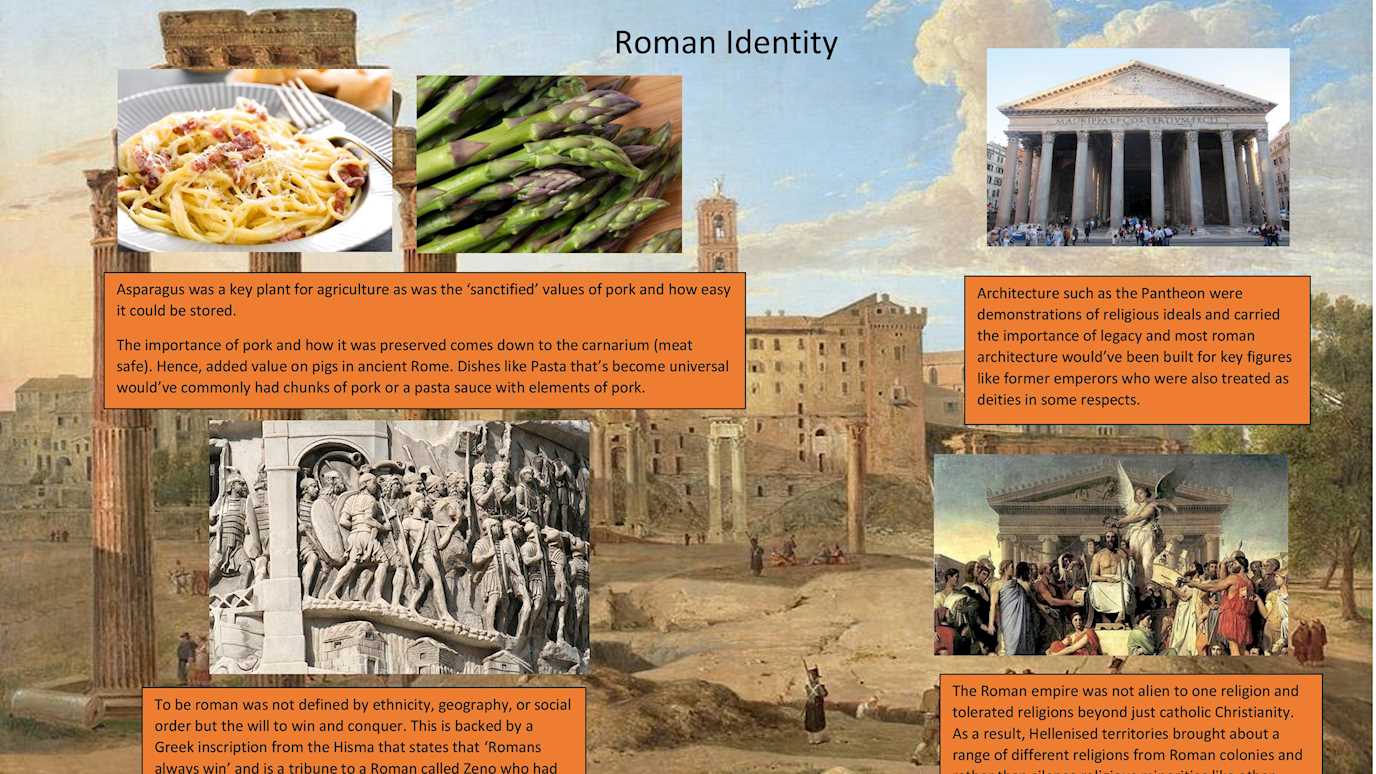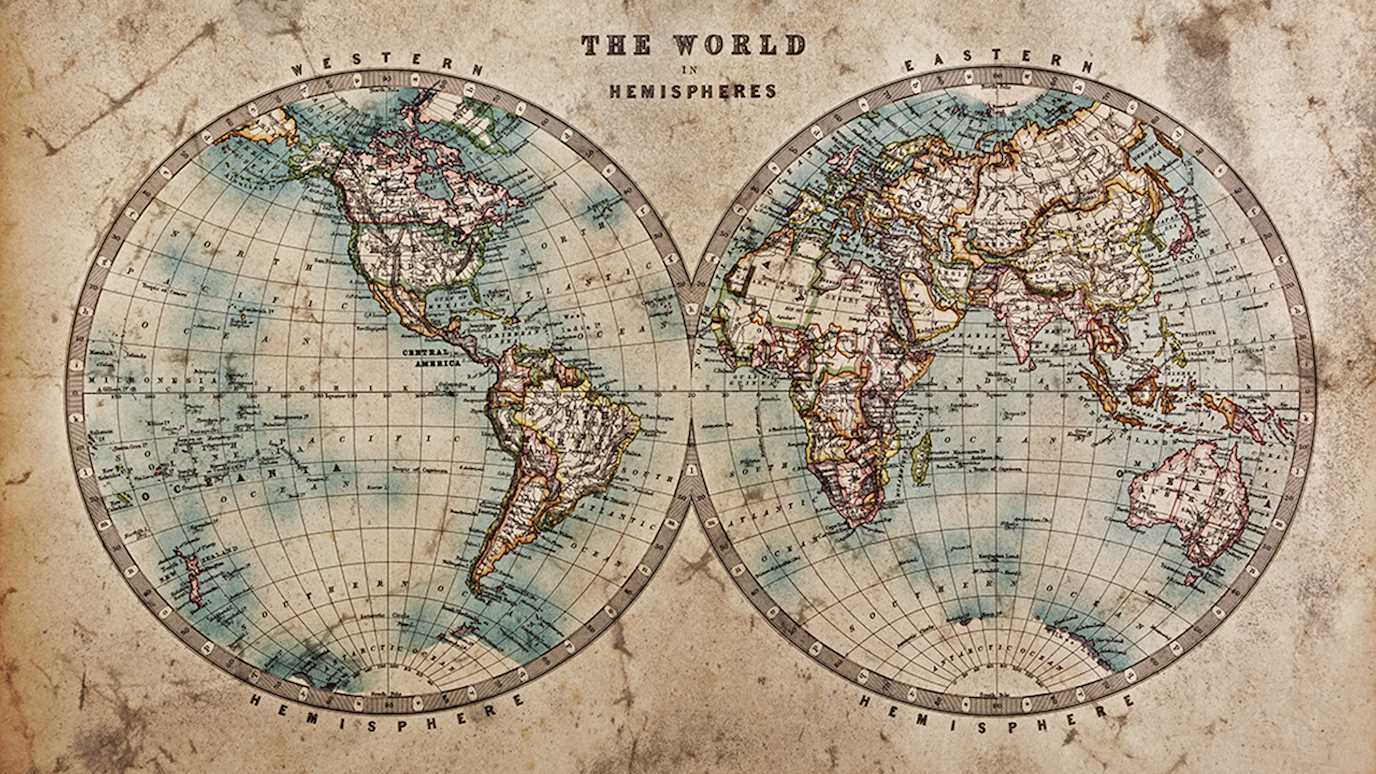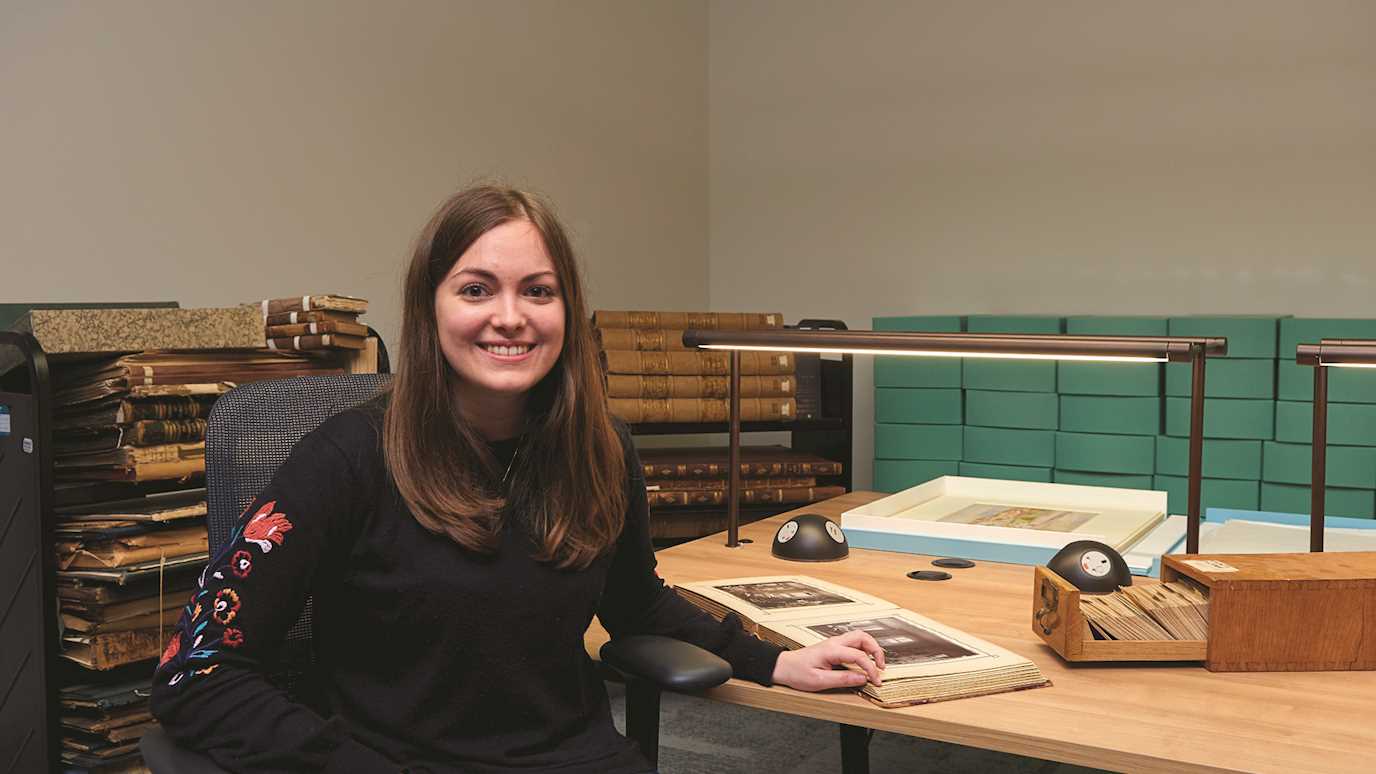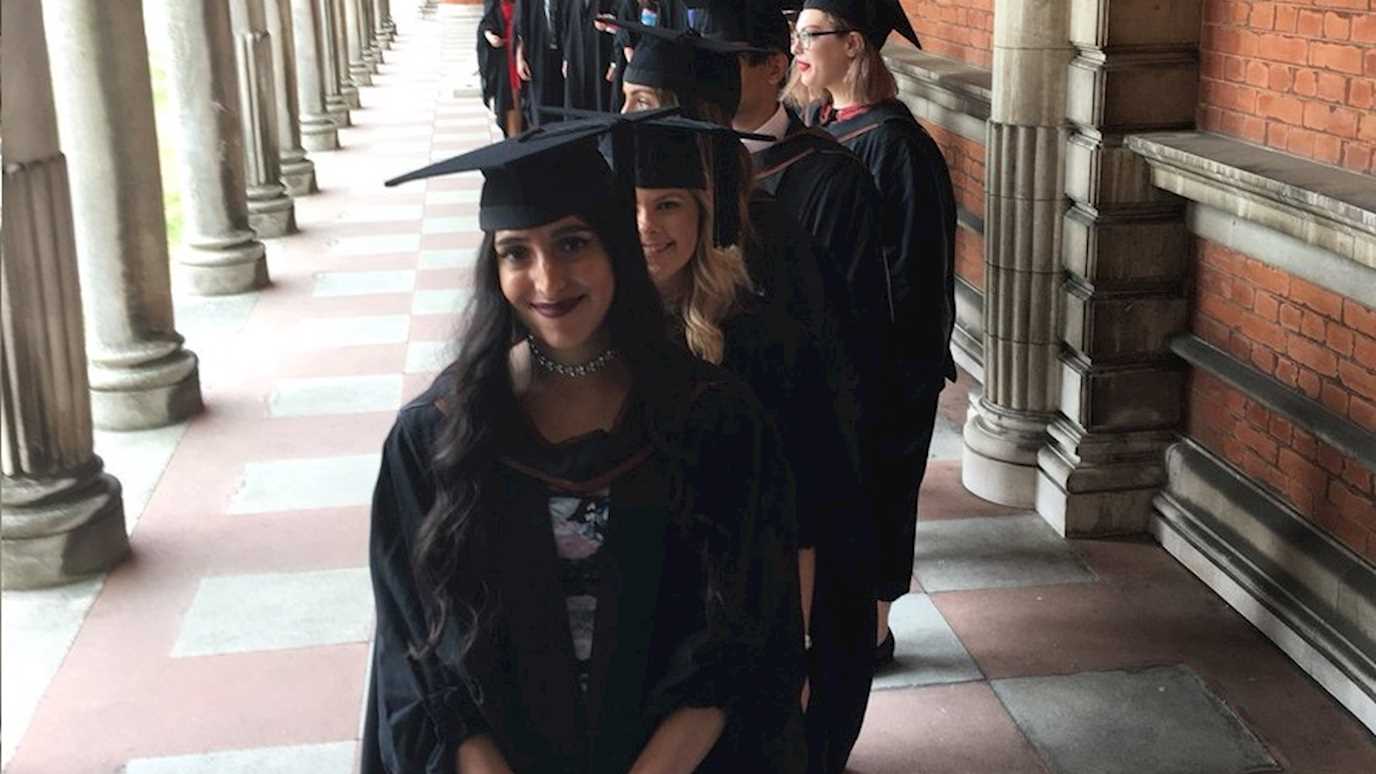Roman Identity
This poster consists of four key aspects of Roman identity from the top left to bottom right of the poster: food (top left), architecture (top right), military (bottom left), religion (bottom right).
Beginning with food, arguably the most prevalent factor when considering identity. The study of food itself conveys how food permeates nearly every aspect of Roman life through agriculture, the illustration of the division of labour, resource management and ‘individual decision making within a larger complex socio-cultural framework’ (as quoted from Murphy,C. from Food and Roman Culture). Food was a necessity of the physical realm and a constructed cultural ideology which was driven by social and cultural traditions. The types of food that were consumed by romans go as far as to illustrating the social symbolism and food was a driving force for the way roman citizens would have communicated and how food would have maintained a social hierarchical structure considering the elites would have had access to imported foods across the roman colonies that would otherwise not have been accessible to agrarians or the lower classes.
As for architecture, some were designed for social purposes such as the aqueducts and bath houses, although bath houses were not originally a Roman custom but rather a Greek one. However, there are a lot of borrowed aspects from the Greeks when discussing architectures. The purpose of building such architectures stemmed from the same purpose too. Former emperors were treated as deities too and had rituals within these built temples that houses the legacy of former emperors. Such rituals were publicly financed deities were depicted in the form of statues and imagery which would’ve provided an important religious infrastructure. In tandem to architecture, religion was deliberately preserved in the form of architecture through political financing which only furthers the importance of religion being a part of roman culture and identity.
On the other hand, the poster does not neglect the fact that religion was very broad in the Roman empire. However, religion was not an aspect that was original or unique to the roman culture. The very cultural aspect was Greek but that does not mean that Catholic Christianity was not the most prominent or unimportant. The influence of Roman Catholicism has now deep rooted into modern day society. This emphasises the importance religion would have had with the imperial period of the Romans. Many religions existed in harmony as Rome became known as the port that is exported religion from Mediterranean countries around the roman colony, these religions and new cultures that merged were only possible through the military’s colonialization.
The military defined identity in Ancient Rome. To be roman was not defined by ethnicity or geography but the will to win and conquer. Backed by a Greek inscription from the Hisma that states that ‘Romans always win’ and is a tribune to a Roman called Zeno who had an Arabic father. To be Roman was to have incorporative power and an openness to different cultures and ideals.

























